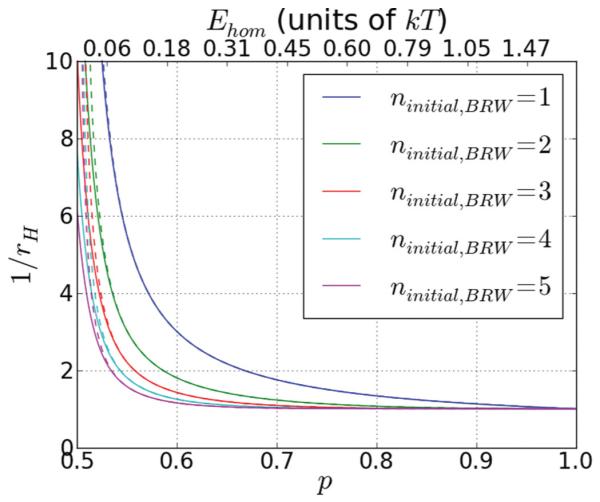FIG. 2.

(Color online) The homolog binding rate. We show as a function of p for various values of ninitial,BRW. The lines from top to bottom are for ninitial,BRW = 1 through 5, respectively. The dashed lines show the analytically calculated values in the limit of very long strands, while the solid lines show the values obtained using a Markov chain method with absorbing boundary conditions at nstep,BRW = 0 and nstep,BRW = 30. Note that the bounded case is already in very good agreement with the limiting behavior. For ninitial,BRW > 1, we find a significant significant decrease in (and a significant increase in rH) as p goes from 0.5 to ~0.65, which corresponds to a moderate value of Ehom ~ 0.31kT. After that, only little is gained by further increasing p. For ninitial,BRW = 1 however, the asymptotic value of is only reached as p ≈ 0.8, or Ehom ~ 0.69kT.
